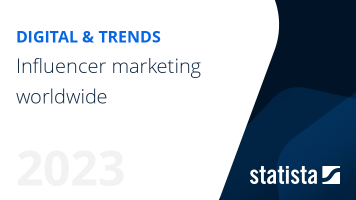Influencer marketing in Indonesia has been on the rise in recent years. The country’s relatively high
, are two key factors contributing to this growth. In addition, the increasing number of brands entering Indonesia’s retail landscape has made it harder for consumers to decide what to purchase. Recommendations from social media personalities or influencers have become a leading factor for customers in determining their purchase decisions.
The state of influencer marketing in Indonesia
As one of Southeast Asia’s largest economies, and with the
total population in Indonesia surpassing 270 million, it offers great prospects for influencer marketing. Moreover, the
number of social network users in Indonesia, projected to reach around 270 million by 2028, points to the potential of this marketing strategy. The increasing number of social media users provides a large talent pool for potential influencers from different tiers and niches, as well as a growing audience for brands’ marketing campaigns.
Influencers bridge the gap in engagement and interaction between brands and consumers. Beauty, food, and beverage brands in Indonesia are among the brands that leverage influencer marketing the most. These brands have seen the positive impact of this type of marketing across all social media platforms. According to a recent survey, around 26 percent of
Indonesian brands run influencer campaigns once a month. Audience reactions to influencer marketing content have been favorable, with approximately 68 percent of
Indonesian consumers having purchased an item or product endorsed by an influencer.
Influencer marketing metrics
Indonesian influencers rely on several factors, including the quality of their content and their number of followers, as a benchmark for their pricing strategies. Additional measures to gauge the quality of an influencer include the number of comments and likes they receive for their posts. Indonesian brands, however, brands have their own metrics to consider regarding which influencers to work with. Some of these metrics include influencer awareness level, influencer follow ratio, influencer credibility ratio, and influencer engagement across different social media platforms. These metrics help brands to determine which influencer is most trusted by the audience. However, with the variety of content formats available on social media platforms today, creating influencer marketing campaigns in
formats suiting the preferences of today’s audiences can also contribute to the success of influencer marketing.
This text provides general information. Statista assumes no
liability for the information given being complete or correct.
Due to varying update cycles, statistics can display more up-to-date
data than referenced in the text.




































